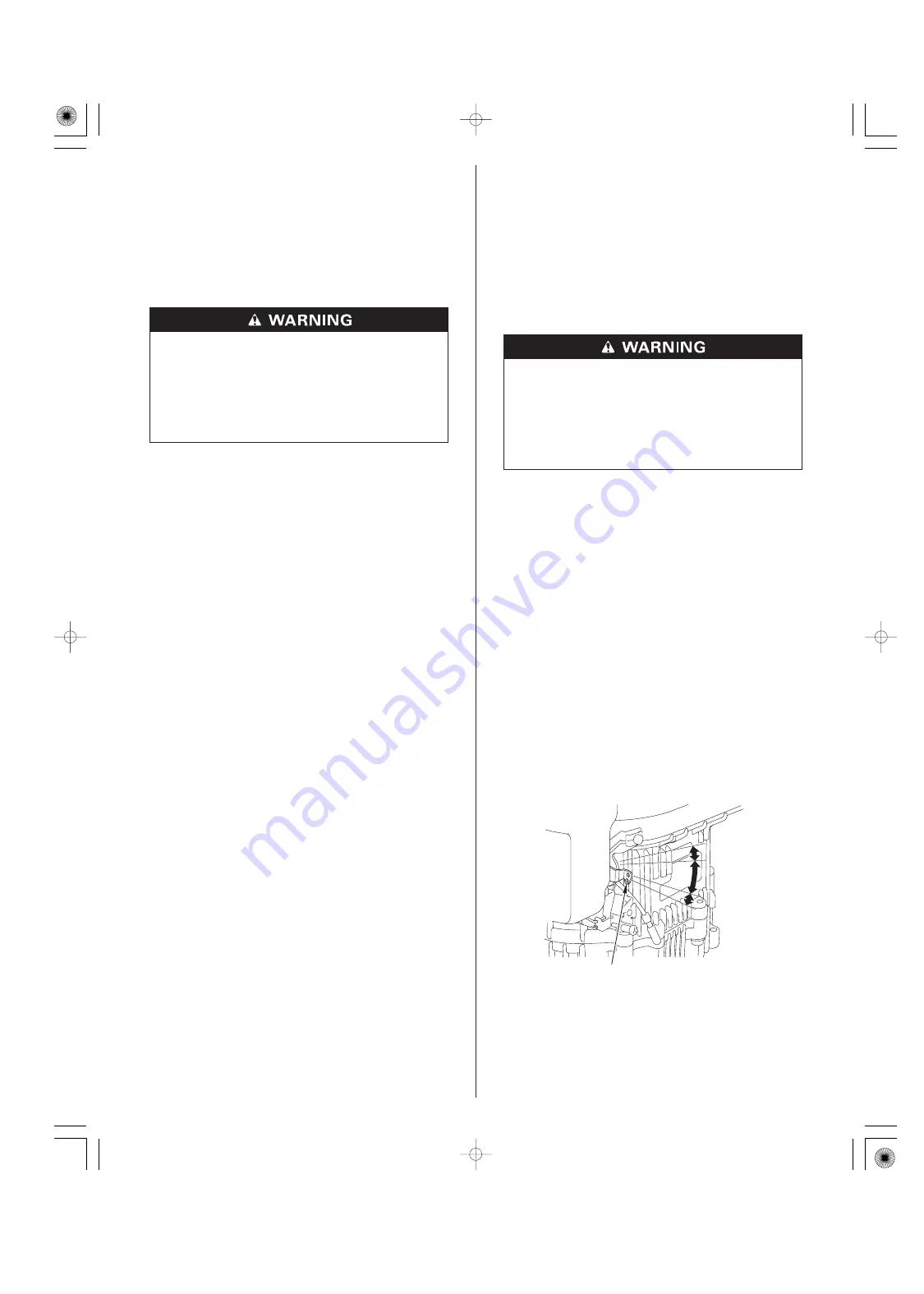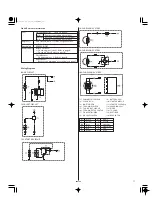
ENGLISH
OPERATION
BEFORE OPERATION CHECKS
SAFE OPERATING PRECAUTIONS
Control Lever
OFF
MIN.
MAX.
CHOKE
IS YOUR ENGINE READY TO GO?
Check the Engine
Check the General Condition of the Engine
CONTROL LEVER
CHOKE
MAX.
O
O
F
F
F
F
M
M
I
I
N
N
.
.
4
Before operating the engine for the first time, please review the
SAFETY INFORMATION section on page
and the
BEFORE
OPERATION CHECKS on page
.
For your safety, do not operate the engine in an enclosed area
such as a garage. Your engine’s exhaust contains poisonous
carbon monoxide gas that can collect rapidly in an enclosed area
and cause illness or death.
Exhaust contains poisonous carbon monoxide gas
that can build up to dangerous levels in closed areas.
Breathing carbon monoxide can cause
unconsciousness or death.
Never run the engine in a closed, or even partly
closed area where people may be present.
Review the instructions provided with the equipment powered by
this engine for any safety precautions that should be observed
with engine startup, shutdown or operation.
––––––––
The control lever operates the engine switch, throttle, and choke.
Stop the engine by switching off the ignition system.
All other control lever positions leave the ignition
system switched on.
–––––––
––––––
–––––
For running the engine at idle speed.
For restarting a warm engine, and for running the
engine at maximum speed.
Enriches the fuel mixture for starting a cold engine.
The control lever shown here will be connected to a remote
control on the equipment powered by this engine. Refer to the
instructions provided with that equipment for remote control
information.
For your safety, to ensure compliance with environmental
regulations, and to maximize the service life of your equipment, it
is very important to take a few moments before you operate the
engine to check its condition. Be sure to take care of any problem
you find, or have your servicing dealer correct it, before you
operate the engine.
Review the instructions provided with the equipment powered
by this engine for any precautions and procedures that should
be followed before engine startup.
Check the equipment powered by this engine.
Check the air filter element (see page
). A dirty air filter
element will restrict air flow to the carburetor, reducing engine
performance.
The ‘‘Oil Alert’’ buzzer (applicable types) will warn you when
engine oil needs to be added to the crankcase. If the buzzer
sounds, stop the engine and add oil.
Check the engine oil level (see page
). Running the engine
with a low oil level can cause engine damage.
Check the fuel level (see page
). Starting with a full tank will
help to eliminate or reduce operating interruptions for refueling.
Check that all shields and covers are in place, and all nuts, bolts,
and screws are tightened.
Look for signs of damage.
Remove any excessive dirt or debris, especially around the
muffler and recoil starter.
Look around and underneath the engine for signs of oil or
gasoline leaks.
Always check the following items before you start the engine:
Before beginning your pre-operation checks, be sure the engine is
level and the engine switch is in the OFF position.
Improperly maintaining this engine, or failure to
correct a problem before operation, can cause a
malfunction in which you can be seriously hurt or
killed.
Always perform a pre-operation inspection before
each operation, and correct any problem.
4
1.
2.
3.
4.
1.
2.
3.
4.
09/11/26 13:51:28 32Z5N610_004
Summary of Contents for GXV340
Page 19: ...09 11 26 13 56 42 32Z5N610_019 ...





































